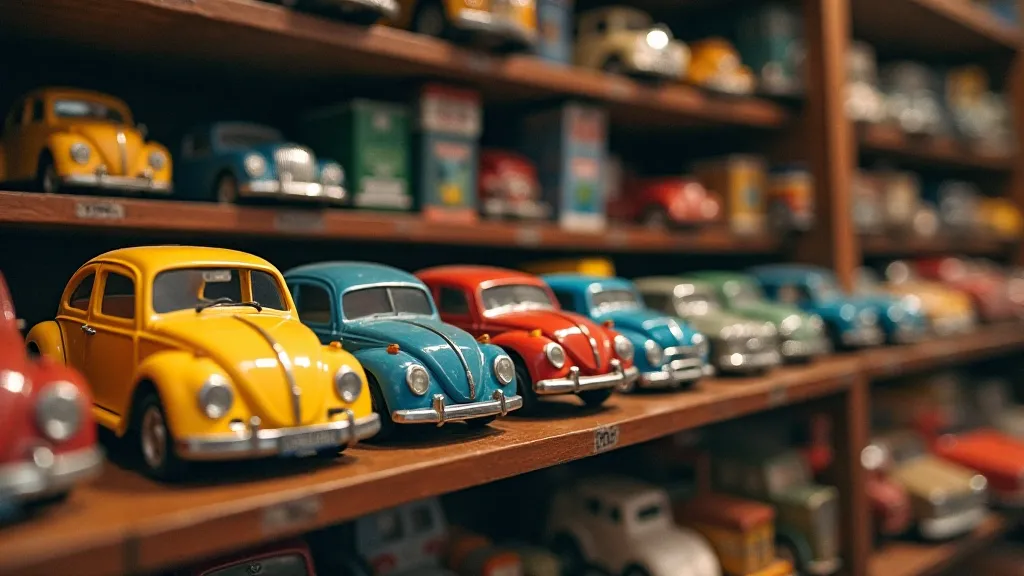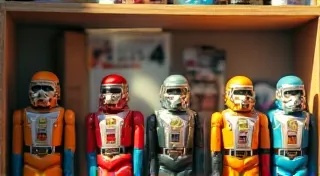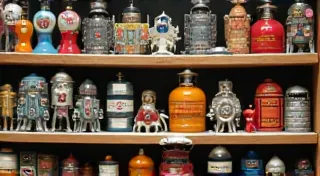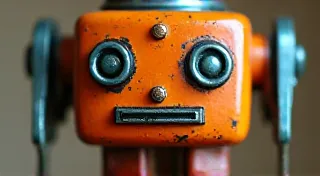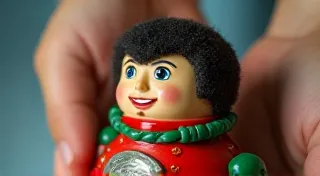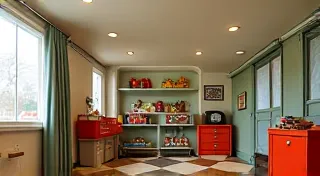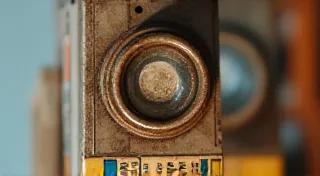Coping with Condition: Grading Vintage Toy Condition
Welcome to the fascinating – and sometimes frustrating – world of vintage toy collecting! Many new collectors are quickly overwhelmed by the sheer variety of toys available, the history behind them, and, crucially, how to accurately assess their condition. Condition significantly impacts a vintage toy's value and desirability, so understanding condition grading is a skill every serious collector needs to master. This guide will break down standard grading scales, explain common condition issues, and offer practical advice for evaluating vintage toy condition.
Why Condition Matters: The Value Equation
Simply put, a vintage toy’s value is heavily influenced by its condition. While rarity and desirability play crucial roles, a toy in pristine condition will almost always command a higher price than an identical toy in poor condition. Condition reflects the toy's history – how it was played with, stored, and preserved over the years. Collectors are often willing to pay a premium for toys that have been treated well and retain their original paint, stickers, and packaging.
Think of it like classic cars or antique furniture. The better the condition, the more valuable it becomes. A mint-condition 1960s GI Joe action figure, still on its original card, will be worth significantly more than a GI Joe action figure that's been heavily played with, has faded paint, and missing accessories. This pursuit of pristine examples speaks to a broader appreciation for nostalgic items, reflecting a general interest in the rise of retro and the appeal of objects tied to simpler times.
Standard Condition Grading Scales
While different grading systems exist, most collectors adhere to a similar framework. Here’s a breakdown of the most common grading scale, from best to worst:
Mint (M): The Holy Grail
This is the highest and rarest grade. A Mint toy is essentially as it left the factory – perfect in every way. It exhibits no signs of play, wear, or damage. The original packaging (if applicable) is also pristine. Finding a toy in Mint condition is incredibly difficult, and they command top dollar. These are often “unopened” examples, sometimes still sealed in their original factory packaging.

Near Mint (NM): Exceptional Quality
Near Mint toys are extremely clean and show only the most minimal signs of handling. These might be minor imperfections only visible upon close inspection. The original paint is vibrant, and all accessories (if any) are present and in excellent condition. Packaging (if applicable) is also near flawless. They’re the next best thing to Mint.
Excellent (EX): Above Average
Excellent condition toys show minor signs of play but remain generally attractive. There may be slight wear on edges or corners, a tiny scratch, or a barely noticeable flaw in the paint. Original accessories are typically present and in good condition.
Very Good (VG): Good, Solid Example
Very Good condition toys exhibit more noticeable signs of wear. This could include faded paint in certain areas, minor chipping, or slight discoloration. Some accessories may be missing or show signs of wear. A VG toy is still a desirable piece, but the value is reduced compared to higher grades.
Good (G): Playworn
Good condition toys have experienced significant play and handling. They may have more noticeable paint wear, chipping, or discoloration. Missing accessories are common. While the toy may have some cosmetic flaws, it's still intact and representative of its original design. The history behind many of these toys is fascinating, especially considering the manufacturing processes of the time – something well explored through articles like The History of Marx Toys: A Look Back.
Fair (F): Damaged, but Complete
Fair condition toys show significant wear and damage. They may have broken parts, missing pieces, or substantial paint loss. While often a "project" toy for restoration, they are still valued because of their completeness. They are a good find for the toy’s intrinsic design.
Poor (P): Significant Damage
Poor condition toys are heavily damaged and may be incomplete. They are often sought after by restoration enthusiasts or collectors interested in historical preservation.
Common Condition Issues to Look For
Beyond the overall grade, specific issues can significantly impact a toy’s value:
- Paint Loss: This is perhaps the most common issue. Areas prone to wear, such as edges and corners, are often affected.
- Scratches: Surface scratches are common, especially on plastic toys.
- Cracks: Plastic toys can develop cracks due to age and stress.
- Discoloration/Fading: Exposure to sunlight can cause plastic and paint to fade.
- Sticker Loss/Damage: Stickers are often the first things to go on vintage toys.
- Missing Parts: Missing accessories, limbs, or other parts significantly reduce value.
- Repairs: Visible repairs can detract from the toy's overall appeal.
- Box/Packaging Condition: The condition of the original box or packaging is crucial, especially for toys still in their original presentation. The aesthetics of these early boxes are a significant part of the toy's overall appeal, mirroring the charm found in The Golden Age of Toy Advertising: Posters and Catalogs.
Grading Tips: Becoming a Skilled Assessor
Here are a few practical tips for evaluating vintage toy condition:
- Lighting is Key: Examine toys under good lighting to accurately assess paint wear and scratches.
- Use a Magnifying Glass: A magnifying glass can help you identify minor flaws.
- Handle with Care: Handle vintage toys gently to avoid causing further damage.
- Compare to References: Refer to online resources and price guides to compare your toy’s condition to similar examples.
- Be Honest: Accurate grading is essential for building trust and ensuring fair transactions.
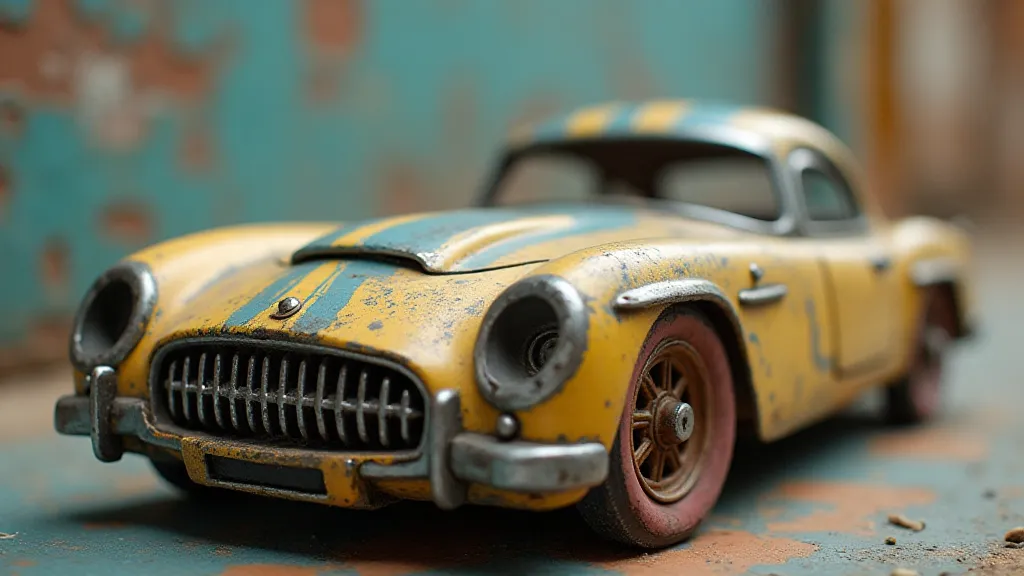
The Impact of Restoration
Restoration can be a controversial topic in the vintage toy collecting community. While restoring a damaged toy can make it more visually appealing, it often reduces its value significantly. Collectors generally prefer original, unrestored examples, as they represent the toy's history and authenticity. However, some collectors specialize in restoring vintage toys, and their restored pieces can still hold value, albeit different than an unrestored example. The techniques and artistry involved in restoring these pieces is often just as fascinating as a beginner's guide to collecting vintage action figures.
Conclusion: A Lifelong Learning Process
Mastering the art of grading vintage toy condition takes time, practice, and a keen eye. Don’t be discouraged if you make mistakes along the way. The more toys you examine, the better you’ll become at accurately assessing their condition and understanding their value. Happy collecting!
